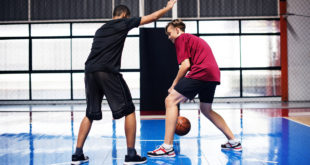Inside our bodies, we experience changes as well. Selected hormone levels may drop, we may lose hair, our weight may increase, our risk for heart disease may increase, our muscles may deteriorate, and our bones may do the same thing. Health experts often give suggestions to help minimize discomforts and to preserve our health. Recently, researchers have suggested that exercising may be of great benefit to peri-menopausal and menopausal women, and for a good reason.
Exercise is Associated with Reducing Anxiety, Depression, and Stress
In a study published in early 2008, researchers examined the effect of physical activity in 401 Caucasian and African American women over eight years. At the beginning of the study, the average age of these women was 42 years old. Researchers discovered that those who had the highest level of physical activity also had a lower level of stress. They also reported that anxiety, stress, and depression were lowest among those who chose the physical activity. These physically active women walked at a moderate pace (four miles per hour) for 90 minutes at least five times a week.1
In another study, 48 women in menopause who did not exercise were randomly divided into two groups, aged 55–72 years old. The first experimental groups participated in a cardiorespiratory, stretching, muscle-strengthening, and relaxation exercise program two times a week, totaling three hours a week. The second group, called the control group, was not given an exercise program to follow. At the end of 12 months, researchers used a questionnaire and measured their well-being. The experimental group showed a significant improvement in their health-related quality of life. Other studies demonstrate similar outcomes.2
Exercise Has Been Reported to Help Maintain Bone Density
As we age, we begin to lose calcium from our bones and too much loss may mean osteoporosis or brittle bone disease. This has been reported in several studies. One study looked at 48 women who engaged in a high-intensity exercise program twice a week, while 30 women did not. At the end of the session, the exercisers had a better bone density profile when compared to the non-exercisers. In addition, the exercisers had better cholesterol and fat profiles in their blood values compared to the other group.3
Exercise Has Other Benefits
In addition to reducing anxiety, depression, and stress and improving bone density and blood fat profiles, exercise can help maintain a smaller waist to hip ratio. A smaller ratio means that there is a decreased risk of heart disease. Exercise may help prevent or slow down cognitive decline. Exercise also reduces insomnia at night. This helps us get a good night’s sleep. The number of migraines may be reduced, and women may experience fewer mood swings. And lastly, exercise helps to build muscles during a time when muscles deteriorate.
How Should Women in Menopause Exercise?
Researchers are studying how women going through menopause should exercise. Perhaps slowing strength training exercises may help maintain muscle integrity. Dr. Alexandra Sanger from the University of Salzburg conducted a study that examined two ways to exercise. One way is through hypertrophy resistance training. This method helps to strength train those who need muscle growth. The new method being tested is called Superslow® resistance training. This is similar to hypertrophy resistance training, but the movement is slow, and there are fewer repetitions. This latter method has been tested and compared among menopausal women for 12 weeks. Dr. Sanger reports that although both methods help stimulate muscle growth, the Superslow® method may be more effective.4
The bottom line for women approaching or are in the midst of menopause is developing or maintaining a rigorous exercise program. Buying a good pair of walking shoes and building walking into break time and lunchtime at work can help reap the benefits of exercise. Getting two three-pound and/or five-pound weights and keeping them at work or in the car’s trunk can provide opportunities to keep muscles fit. Bicep curls, tricep curls, and squats can help build and maintain muscle strength.
Get Stepping
Exercise is an important part of staying healthy. Trying to stay healthy by eating alone is effective as trying to clap with one hand. We need to talk to our doctors about healthy living, we need to eat right, and we need to exercise regularly.
When writing this piece, I am sitting in front of my fan, trying to curtail the effects of hot flashes. But my walking shoes are right next to my desk, reminding me what I need to do. The temptation to sit through potential exercise time is always before me, but I know the benefits of exercising. As we get older, we like to slow down, sit for a spell and relax. Even though this is important to our health, we also need to get up, put on our shoes, and step.
If you liked this, you might also like Getting A New Start
Pamela Williams writes from Southern California
1. Nelson DB, et al. "Effect of physical activity on menopausal symptoms among urban women." Med Sci Sports Exerc. 2008 Jan. 40(1):50-58.
2. Villaverde-Gutierrez C, et al. "Quality of life of rural menopausal women in response to a customized exercise programme." J Adv Nurs. 2006 Apr. 54(1):11-19.
3. Kemmler W, et a. "Long-term four-year exercise has a positive effect on menopausal risk factors: the Erlangen Fitness Osteoporosis Prevention Study." J Strength Cond Res. 2007 Feb. 21(1):232-239.
4. Society for Experimental Biology (2008, July 8). "Slow exercise (not fast) is better for menopausal women." Science Daily. Retrieved July 30, 2008.
 Answers for Me Support & encouragement for every-day life
Answers for Me Support & encouragement for every-day life



